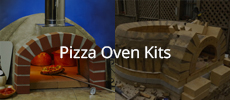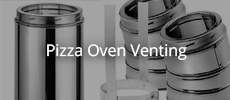Re: Share your crack stories
Well put Greg. Make sure the wife doesnt see this.. Shhhh
Announcement
Collapse
No announcement yet.
Share your crack stories
Collapse
X
-
Re: Share your crack stories
Thanks Greg. I appreciate your feedback and am encouraged my oven will provide years of outstanding use.
Leave a comment:
-
Re: Share your crack stories
my oven cracked within the first two firings. i was heart broken. did everything right. slow cure. gentle heating. etc. but the cracks (yes two) never got any bigger. now 4 years later and 100s of firings i see them like the lines on my wife's face, character.
Leave a comment:
-
Re: Share your crack stories
Tscarborough, I wanted to see if I understand you correctly. From what I've read and seen from your images:
1. Cracks are inevitable
2. The only cracks to care about are structural cracks
3. Structural cracks can be prevented by reinforcing the base of the dome
4. Use mortar to reinforce; it has tolerance for expansion and contraction
5. Adding some metal reinforces the mortar and will keep it in place
The idea then is to make something like a "dome bra" to keep the whole thing together.
Funny thing, I did something like that with my first cob oven, after seeing pictures around on here that looked similar to that cladding I think I see. In my own case, I have had some cracks where the random firebricks I threw into the cob meet up with the cob. Also, my entrance arch was made afterwards after realizing I needed to extend the front of the oven and have a deeper entrance. The top of that arch is too flat for a bunch of cob, and it has been falling apart.
Leave a comment:
-
Re: Share your crack stories
Incremental temperature change is the best. Small fire, warm it all up slowly, and door it off to equalize and hold the heat. In my barrel vault, I built a fire in it within minutes of removing the form, (which I removed within minutes of completing it). I burned baby fires in it while I did the rear wall, the entry, and the house. Note that I used a heat set refractory mortar (wet), not Heatstop or homebrew for the vault. The joints were tight enough for this not to be an issue, but the heat set refractory is no good for joints over a maximum of a 1/4", it shrinks a lot.
Leave a comment:
-
Re: Share your crack stories
No, I have never followed the schedule...not because it's not good, but I was building ovens before I found this site. The slow cure I referred to was the refractory material I used. In hot or cold weather, mortar or concrete that is allowed to dry too fast (flash drying) and this makes for extremely weak material. So we took precautions to allow the mortar and cladding to dry slowly( not a problem in winter..but frozen mortar is as weak as flashed mortar) , then when we completed the dome ( Neapolitan) we had an electric heater in it for a couple weeks while we worked on the enclosure and stonework. We even covered it with insulating blankets at night. Then we fired the oven everyday for a week, building up from the next day. Slow cured masonry is the strongest...patience is key.Originally posted by CoyoteVB View PostI really appreciate the the experts opinions on this. Stonecutter, is your definition of a slow cure schedule different that the FB schedule.. I followed the FB schedule. I checked the dome temp. I think I should have focused more on the floor and sides. I still think my "crack' is a result thermal shift. I moved the fire too the left side too quickly. The dome hit 800 F but the side were still much lower. Moving he fire to the side put major temperature/thermal expansion into play. If I did it a again.....I would follow Tscar's advice and clad the lower courses. I would also slow the curing schedule so that the side and floor "SLOWLY" reach temp. I have have had 5-10 pizza nights since posting this "crack" and I think the oven is just now fully cured and settling in. .
Leave a comment:
-
Re: Share your crack stories
My wife cooked them on the front landing about 6" in front of the oven opening one night for desert when we had pizza.Originally posted by CoyoteVB View PostMy wife also likes the meringues that the oven creates once the oven cools.
The guests were amazed and loved them.
Leave a comment:
-
Re: Share your crack stories
I really appreciate the the experts opinions on this. Stonecutter, is your definition of a slow cure schedule different that the FB schedule.. I followed the FB schedule. I checked the dome temp. I think I should have focused more on the floor and sides. I still think my "crack' is a result thermal shift. I moved the fire too the left side too quickly. The dome hit 800 F but the side were still much lower. Moving he fire to the side put major temperature/thermal expansion into play. If I did it a again.....I would follow Tscar's advice and clad the lower courses. I would also slow the curing schedule so that the side and floor "SLOWLY" reach temp. I have have had 5-10 pizza nights since posting this "crack" and I think the oven is just now fully cured and settling in. My new problem is planning and heat utilization. The oven stays hot for days. Pizza the first night. Bread in the morning. Beer Can Chicken and baked potatoes that evening. And, a slow cooked brisket or pulled pork once it cools to 225F or so. My wife also likes the meringues that the oven creates once the oven cools.
Leave a comment:
-
Re: Share your crack stories
I think it is the thermal expansion of the refractory that is the problem combined with the structure and the fact that the rate of heating is uneven in different parts of the dome and floor for that matter. The first oven I built had a central flue and where the inner dome penetrated through the outer shell you could see a gap of around 4mm between the two because of the expansion. That translated to about 2% which is not inconsiderable.Originally posted by Tscarborough View PostThe reality is that the amount of outward thrust exhibited by these ovens is minimal, and simple cladding will prevent a soldier/sailor course built oven from collapsing, but it will be prone to structural cracking. Not a big deal, but not a design that allows for much error.
Leave a comment:
-
Re: Share your crack stories
Yeah, one neo we did was close to 46" with a soldier base ...no buttressing or banding. No problems...really slow cure schedule because it was winter time and we were in a temporary shelter. Cladding wasn't even an inch, no reinforcement. Any larger, I would have done something.
Leave a comment:
-
Re: Share your crack stories
The reality is that the amount of outward thrust exhibited by these ovens is minimal, and simple cladding will prevent a soldier/sailor course built oven from collapsing, but it will be prone to structural cracking. Not a big deal, but not a design that allows for much error.
Leave a comment:
-
Re: Share your crack stories
I have my own trouble with water-table, casting too many pieces!Originally posted by Tscarborough View PostWhen I poured the water table around my oven, I was in a hurry to peel the forms to finish the edge, so about 3 hours after I poured it, I cracked off 4" of one corner...
Leave a comment:
-
Re: Share your crack stories
I haven't reinforced the cladding on any of the ovens I have built, but not because I think it won't work. My current oven will have a soldier course, so I think I'm going to try the SS banding just for some extra stability. I'm not going to bother with reinforcing the cladding though.
Leave a comment:
-
Re: Share your crack stories
The whole dome is cladded, but it is thin (1/4") and not structural.
Leave a comment:
-
Re: Share your crack stories
This is great information that is not found in the FB plans. I wish I started this discussion before starting my build or at least the first course. haha. I definitely can see how tying everything together may have prevented the crack How thick is the cladding on your ovens. I thought I read somewhere in this forum to limit the cladding/thermal mass and insulate, insulate and insulate. My cladding is only 1/4" to 1/2" thick. The thickness was determined by how much mortar remained in my bucket. Tscar, Do you continue the reinforced cladding over the top of the dome or just to reinforce the soldier course.
Leave a comment:





Leave a comment: